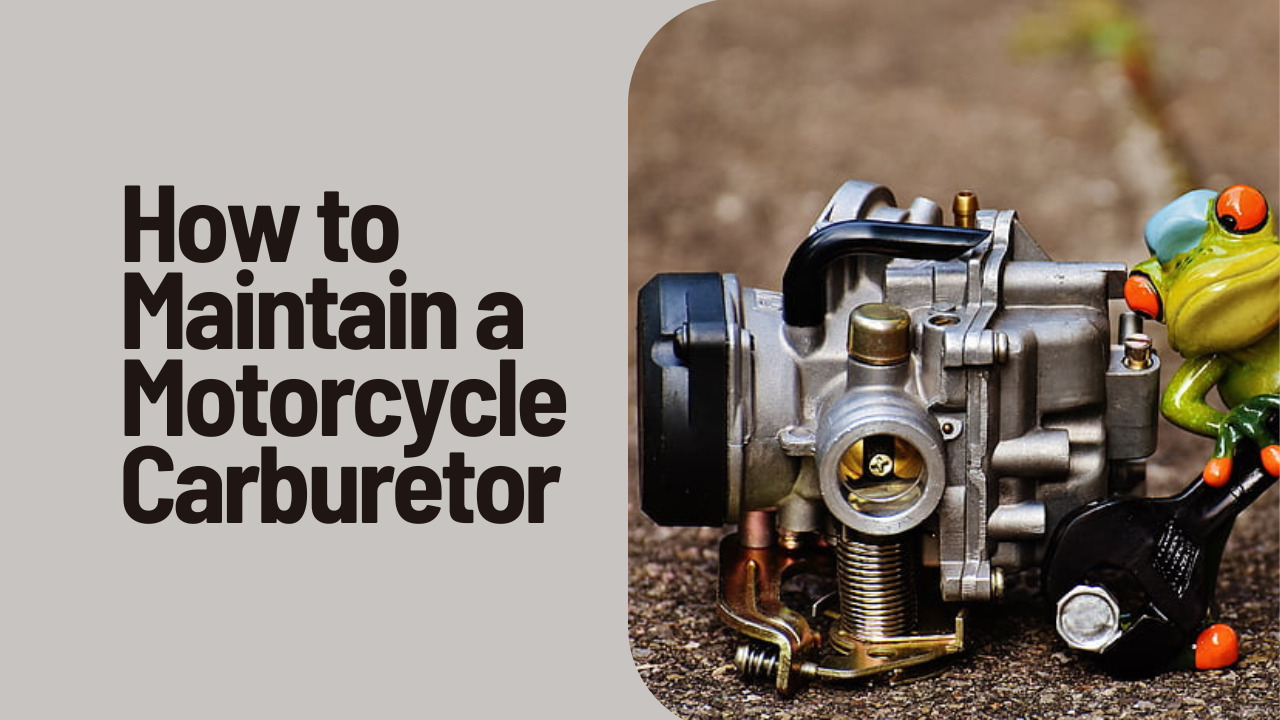Are you tired of your motorcycle sputtering and coughing like it just smoked a pack of cigarettes? Or maybe it’s just not giving you the power and performance you know it’s capable of? Well, fear not because today we’re diving into the wonderful world of motorcycle carburetor maintenance!
We’ll cover everything you need to know about how to maintain a motorcycle carburetor, so your bike performs at its best. So, grab a wrench and let’s get to it.
How to Maintain a Motorcycle Carburetor
Regular maintenance can prevent carburetor issues and extend the life of your motorcycle.
Say goodbye to sluggish performance and hello to smooth, reliable power. Here are some steps you can follow to maintain your motorcycle carburetor:
1. Clean the Carburetor
Every 900 miles or so, clean out built-up gunk in the carburetor. Use a carb cleaner or Seafoam, which can be mixed with your fuel or engine oil, to clean the carburetor without taking it apart. These cleaners will dissolve deposits and clean carburetor passageways, improving the engine’s performance.
Keeping the carburetor clean helps it deliver the right fuel mixture, so your engine runs smoothly.
SEE MORE: Say Goodbye to Carburetor Gunk with Carb Cleaners for Motorcycles
2. Maintain Valve Clearances
The valves need to open and close properly to let fuel and air in and out. Check that the gaps between valves and rocker arms or camshaft are to manufacturer specs. Adjust as needed.
Checking and adjusting the valve clearance
Warning: Make sure the engine is completely cold.
Checking the valve clearances on a motorcycle involves the following steps:
- Remove the valve cover. This will expose the valve train, including the valves, rocker arms, and camshaft.
- Find the valve clearance adjustment screws or nuts. These will be on the rocker arms or between the rocker arms and valve stems.
- Loosen the adjustment screw or nut and use a feeler gauge to measure the gap between the valve stem and rocker arm.
- Adjust the screw or nut to achieve the gap specified in your motorcycle’s service manual. This spec will vary depending on the engine and valve type.
- Tighten the adjustment screw or nut and recheck the clearance with the feeler gauge.
- Repeat for the other valves and cylinder.
- Reinstall the valve cover.
Be sure to follow all safety precautions when working on your motorcycle’s engine. Valve adjustments are generally recommended as part of regular service intervals to ensure proper performance and engine lifespan.
3. Clean the Spark Plugs
The spark plugs ignite the air-fuel mixture, so keep them clean and gapped right. Inspect and clean the spark plugs every 750 kilometers (450 miles) for an old/antique two-stroke motorbike and every 1,500 kilometers (900 miles) for a four-stroke bike.
How to clean the spark plugs
Here are the steps to clean motorcycle spark plugs:
Remove the spark plugs. Carefully pull the spark plugs out of the engine using a spark plug socket and ratchet.
Inspect the spark plugs. Check that the spark plug insulator and center electrode are not damaged or worn down. If they are, replace the spark plug. Minor corrosion can be cleaned, but severe wear or damage warrants replacement.
Clean the spark plugs. If the spark plugs are not damaged, you can clean them. Use a wire brush or sandpaper to scrub off any corrosion or buildup on the center and side electrodes. Be very careful not to damage the insulator.
Gap the spark plugs. Use a wire gap measuring tool to ensure there is a 0.035-inch gap between the center and side electrodes. Adjust the gap by gently bending the side electrode.
Reinstall the spark plugs. Carefully screw the cleaned and gapped spark plugs back into the engine and tighten securely.
Test the engine. Start the engine to ensure the spark plugs are working properly and you have a good spark. If the engine is still not performing well, you may need to replace the spark plugs.
4. Keep the Choke Clean
The choke is responsible for providing extra fuel to the engine during cold starts. It is essential to keep the choke clean and have it replaced immediately if it is damaged.
A damaged choke can cause poor engine performance and difficulty starting the bike.
How to know if the choke needs cleaning
Some signs that your motorcycle carburetor choke may need cleaning include:
- Difficulty starting the engine when cold. If the choke is clogged or stuck, it won’t enrich the fuel mixture for a cold start.
- Idling issues. A dirty or stuck choke can cause erratic idling, stalling, or high idle RPMs.
- Poor acceleration. If the choke isn’t operating properly, it can limit acceleration until the engine warms up.
- Increased emissions or fuel consumption. An unclean choke may not be supplying the optimal fuel-air mixture, resulting in more emissions and wasted fuel.
SEE MORE: Everything About Motorcycle Carburetor Choke Cleaning
If you notice any of these issues, it’s a good idea to clean the choke. You may need to disassemble the carburetor to access and clean the choke plate and mechanism.
Use carburetor cleaner and a wire brush or compressed air to remove any built-up dirt and debris. Then reassemble the carburetor and test for normal operation.
Following these tips is how to maintain a motorcycle carburetor in good working order. With regular maintenance, you’ll keep your bike running well and avoid costly issues down the road. Enjoy your ride!
FAQs About How to Maintain a Motorcycle Carburetor
Why should I clean my carburetor regularly?
A dirty carburetor can cause poor performance and gas mileage. Regular cleaning removes buildup that can restrict fuel flow.
How often should I clean my carburetor?
Most experts recommend cleaning every 2,000-3,000 miles if riding primarily on paved roads. If riding off-road more, clean every 500 miles due to more contaminants.
What’s the best way to clean carburetor parts?
Use a spray carburetor cleaner and rags to dissolve gum/varnish. An ultrasonic cleaner works great too. Be careful not to damage tiny passages.
What carburetor adjustments could improve performance?
Tuning the pilot and main jets can optimize for altitude/weather. Checking float level and synchronizing carbs can also make a difference.
What are some signs it’s time for a carburetor rebuild?
Problems starting, stalling, uneven idling, loss of power under acceleration. Also if it’s been many miles/years since the last disassembly.



![Read more about the article How to Store Motorcycle for Winter [and Mistakes to Avoid]](https://www.motozmo.com/wp-content/uploads/2023/11/winter-motorcycle-storage-300x169.jpg)
